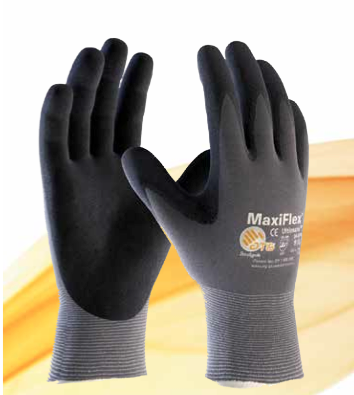
 |
Mark Sennett
Managing Editor |
 |
Kelly Rose
Editor |
ARTICLE
How clean are your industrial work gloves?
05 December 2014
It’s probably something that you never thought about before, right? It’s certainly a conversation stopper at parties, but something very serious on a professional level.

Gloves come out of the packet, so they have to be clean. No-one has ever used them before, so if I use a new pair of gloves every time they must be ok, mustn’t they?
Don’t take this for granted as a lot of the gloves today contain residual chemicals left in the glove from the production process.
The cleanliness issue
The problem is quite widespread - so say studies by the Institute of Occupational Medicine (BGFA) at the Ruhr University in Bochum (Germany), and the Danish Technological Institute for the Environment. The BGFA found that 45% of the leather gloves tested positive to Chromium (VI) impurities, despite the fact that most modern tanning agents are free from large amounts of Chromium (VI). Likewise, the Danish Technological Institute for the Environment found 35% of the leather gloves tested contained Chromium (VI) in levels above the acceptable parts per million (PPM) guides for harmful ingredients.
If I stop using leather gloves and only use synthetic gloves will everything be OK?
The simple and direct answer to that is NO. You always need to check any glove you’re using, even if it is from one of the large, well known manufacturers. Extra attention should be given if you are evaluating polyurethane (PU) gloves, to make sure the parts per million of DMF and THF are respected. So what
should I look for?
Suitable gloves
There are three important elements to be considered when choosing suitable gloves relating to the way they are produced, how clean they are when they come out of the packet and the dermatological aspect for continual use.
Production processes
REACH is the European Union has adopted a regulation in the spirit of protecting human health and the environment from the risks that can be posed by chemicals. Ask your current supplier about the companies obligations towards this regulation to see what they have done and if you currently use ATG® gloves rest assured there are no Substances of Very High Concern (SVHC) in any of our gloves.
Out of the packet cleanliness
Oeko-Tex is the international testing and certification system for textiles, limiting the use of certain chemicals. It has become established as a safety standard throughout the textile manufacturing chain and enables checks to be made for any harmful substances at each stage in the production process. This Oeko-Tex® label is a good indicator of product cleanliness as it comes out of the packet.
Dermatological aspect
As professional work gloves are going to be on the skin for long periods of time, day in, ay out, the dermatological aspect has to be taken into consideration. Think of it another way. Why would you pay for something to go on your hand that is going to damage your health? Unfortunately this is the case for many gloves users today,
but it doesn’t have to be you or your workforce. It’s essential to check if the gloves are dermatologically accredited - and don’t fall into the trap of thinking that the more expensive they are, or the larger the company they come from, the cleaner they will be.
How can ATG help?
You can choose from our focused range with the confidence that ALL our gloves are Dermatologically Accredited. Additionally, they are manufactured in our own factories in accordance with the REACH® European Community Regulation on chemicals (EC 1907/2006), and are yearly tested and in accordance with the Oeko-Tex® 100 standard. We are also ISO 9001 certified and ISO 14001 accreditation.
MORE FROM THIS COMPANY
OTHER ARTICLES IN THIS SECTION























